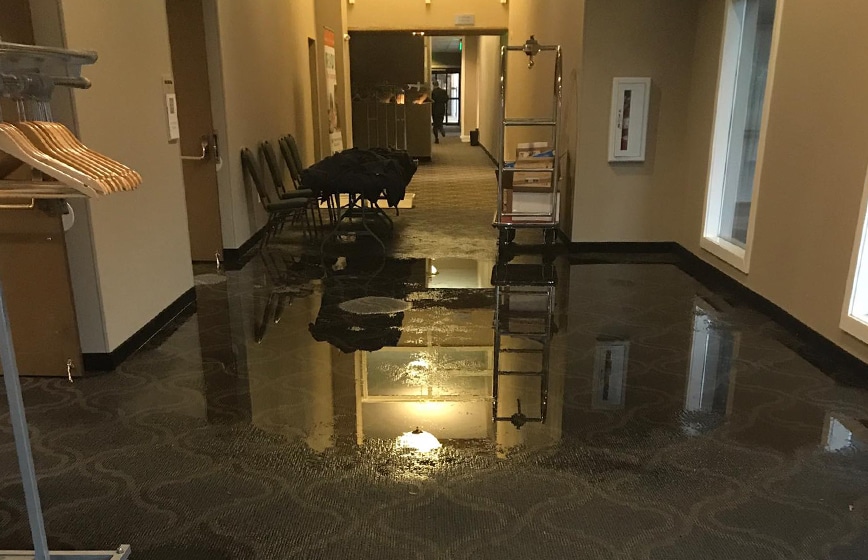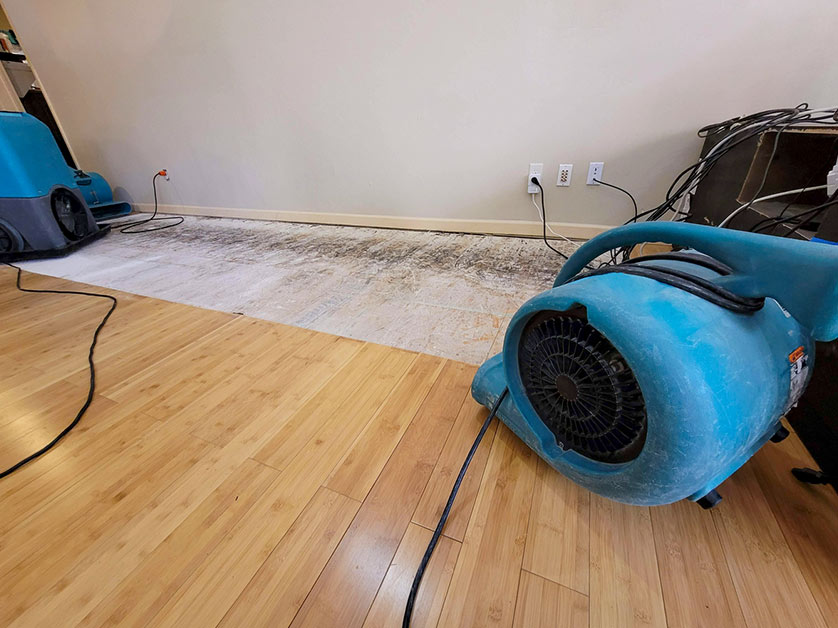Flood Cleanup Services explained for first-time homeowners
Wiki Article
Water Damage Restoration 101: Recognizing the Process and Price
Water damage can strike unexpectedly, leaving property owners in a state of complication. Understanding the repair procedure is vital for efficient recuperation. From examining the damage to picking the appropriate company, each action impacts the general result and expense. Elements such as the kind of water damage and seriousness also play a significant role. What are the certain techniques made use of in restoration, and just how can one plan for possible costs?Sorts Of Water Damage
Water damage can arise from numerous resources, each presenting distinct difficulties for repair. The three primary sorts of water damage are classified based on contamination levels: clean water, grey water, and black water. Clean water stems from sources like broken pipelines or rainwater, positioning very little wellness dangers. Gray water, that includes wastewater from sinks or cleaning makers, consists of contaminants that might create discomfort or disease if consumed. Black water, one of the most hazardous category, comes from sewer or floodwaters, consisting of dangerous germs and pathogens. Each kind requires particular restoration strategies and precaution to effectively minimize and attend to the damage health threats. Recognizing these differences is vital for experts and home owners involved in the water damage reconstruction process.Preliminary Analysis and Inspection
A complete initial assessment and assessment are vital actions in the water damage reconstruction procedure. This phase begins with an expert assessing the degree of the damage, recognizing the resource of the water breach, and determining the sort of water involved - Water Damage Restoration. Specialists use specific devices to determine wetness levels in different materials, such as walls, floors, and furnishings. Additionally, they examine architectural integrity and potential carcinogen, consisting of mold and mildew development. The findings from this evaluation inform the restoration plan, guiding essential activities and resource allotment. Accurate documents of the damage is necessary for insurance cases and future recommendation. Overall, this preliminary assessment lays the groundwork for reliable repair, guaranteeing a detailed feedback to the particular circumstance handy

Water Removal Methods
Complying with the initial analysis, efficient water extraction methods are employed to minimize damage and protect against more problems. These strategies include using customized devices such as industrial-grade vacuum cleaners and completely submersible pumps. The choice of technique depends upon the volume of water existing and the kind of products affected. For standing water, completely submersible pumps are typically made use of for quick removal, while vacuums are excellent for drawing out water from carpets and upholstery. Furthermore, advanced approaches like water extraction floor coverings may be utilized for hard-to-reach locations. The goal is to eliminate as much water as feasible, reducing the potential for mold and mildew growth and structural damage. Motivate and efficient water extraction is crucial in the overall water damage restoration procedure.Drying and Dehumidification Process
Once the water extraction is total, the drying and dehumidification process comes to be essential to recovering the damaged area. This phase normally employs industrial-grade dehumidifiers and air movers to successfully lower moisture degrees. The dehumidifiers pull in wet air, eliminating excess moisture, while air movers distribute air to speed up dissipation. Surveillance equipment is commonly made use of to track moisture and temperature level degrees, guaranteeing excellent drying conditions. The period of this procedure can vary depending upon the extent of the water damage and environmental elements. It is necessary to extensively completely dry all affected materials, including wall surfaces, floor covering, and home furnishings, to protect against mold and mildew development and architectural damage. Appropriate execution of this step is important for an effective repair result.Cleaning Up and Sterilizing Affected Locations

First Analysis and Examination
Before starting any type of repair initiatives, an extensive initial analysis and examination of the influenced areas are crucial for efficient cleansing and disinfecting. This procedure includes recognizing the extent of water damage, determining the source of the water intrusion, and assessing the products impacted. Inspectors typically seek signs of mold and mildew growth, architectural integrity problems, and harmed valuables. The analysis also includes inspecting dampness levels utilizing specific tools to assure no surprise water pockets remain, as these can lead to more complications. Documenting the searchings for is crucial for planning the next actions in the remediation procedure. A comprehensive first assessment allows restoration experts to design a targeted strategy for reliable cleansing and sterilizing, inevitably reducing damage and health and wellness threats.Cleaning Up Techniques and Products
Reliable cleaning and sterilizing of water-damaged locations call for a range of products and strategies customized to the details products influenced. For permeable surfaces like drywall and carpeting, extraction methods are essential to remove excess dampness, complied with by deep cleaning with specialized cleaning agents. Non-porous products such as ceramic tile or metal can be cleaned using commercial-grade cleansers that successfully eliminate pollutants. Steam cleansing is an additional efficient method, particularly for carpetings and upholstery, as it utilizes high temperatures to eliminate germs and mold and mildew. Furthermore, environmentally friendly products are progressively popular for their safety and efficacy. Ultimately, picking the ideal cleansing methods and items not only guarantees prompt tidiness but likewise aids in protecting against additional damage and carcinogen associated with water invasion.Sanitization and Disinfection Approaches
When dealing with water damage, appropriate sanitization and sanitation approaches are important to guarantee the safety and security and health of the damaged atmosphere. After preliminary cleansing, surfaces have to be treated with suitable anti-bacterials to eliminate virus, mold, and germs that grow in damp problems. Common techniques include making use of EPA-approved chemical disinfectants, which can be used through spraying or wiping techniques. Furthermore, ultraviolet (UV) light systems can effectively sterilize locations by counteracting microorganisms without rough chemicals. The option of technique often relies on the type of products affected and the degree of contamination. Eventually, complete sanitization not just brings back a risk-free home however additionally assists prevent future health and wellness risks related to sticking around moisture and mold growth.
Fixings and Restoration Options

Factors Influencing Restoration Expenses
The degree of water damage directly impacts the reconstruction costs homeowners can expect to incur. Factors such as the source of the water, the duration of direct exposure, and the damaged materials considerably affect pricing. As an example, clean water damage from a damaged pipe is typically much less pricey to restore contrasted to damage triggered by sewage. Additionally, the level of contamination dictates the need for specialized cleansing and disposal services, better raising costs. Geographical place likewise contributes, as regional labor rates and schedule of restoration solutions can vary. The seriousness of the feedback affects prices; quicker treatments typically lead to reduce total expenses by avoiding further damage. Recognizing these variables is essential for home owners when approximating remediation costsThe 3 key kinds of water damage are classified based on contamination levels: tidy water, grey water, and black water. A thorough initial analysis and examination are vital actions in the water damage repair procedure. For standing water, completely submersible pumps are normally utilized for fast elimination, while vacuums are perfect for removing water from carpets and upholstery. The degree of water damage directly influences the remediation costs home owners can expect to sustain. Clean water damage from a broken pipeline is typically much try this website less expensive to restore contrasted to damage caused by sewer.
Report this wiki page